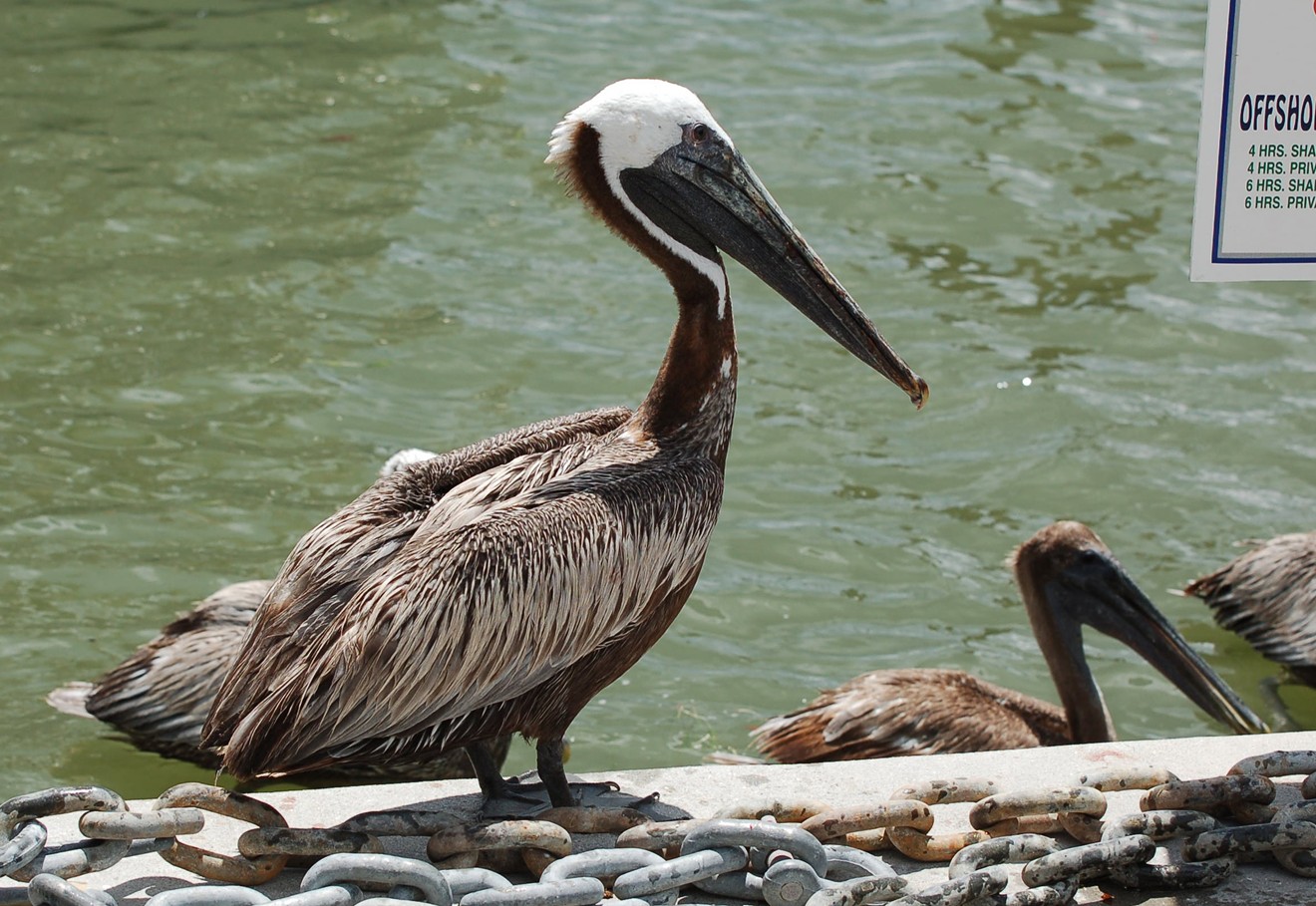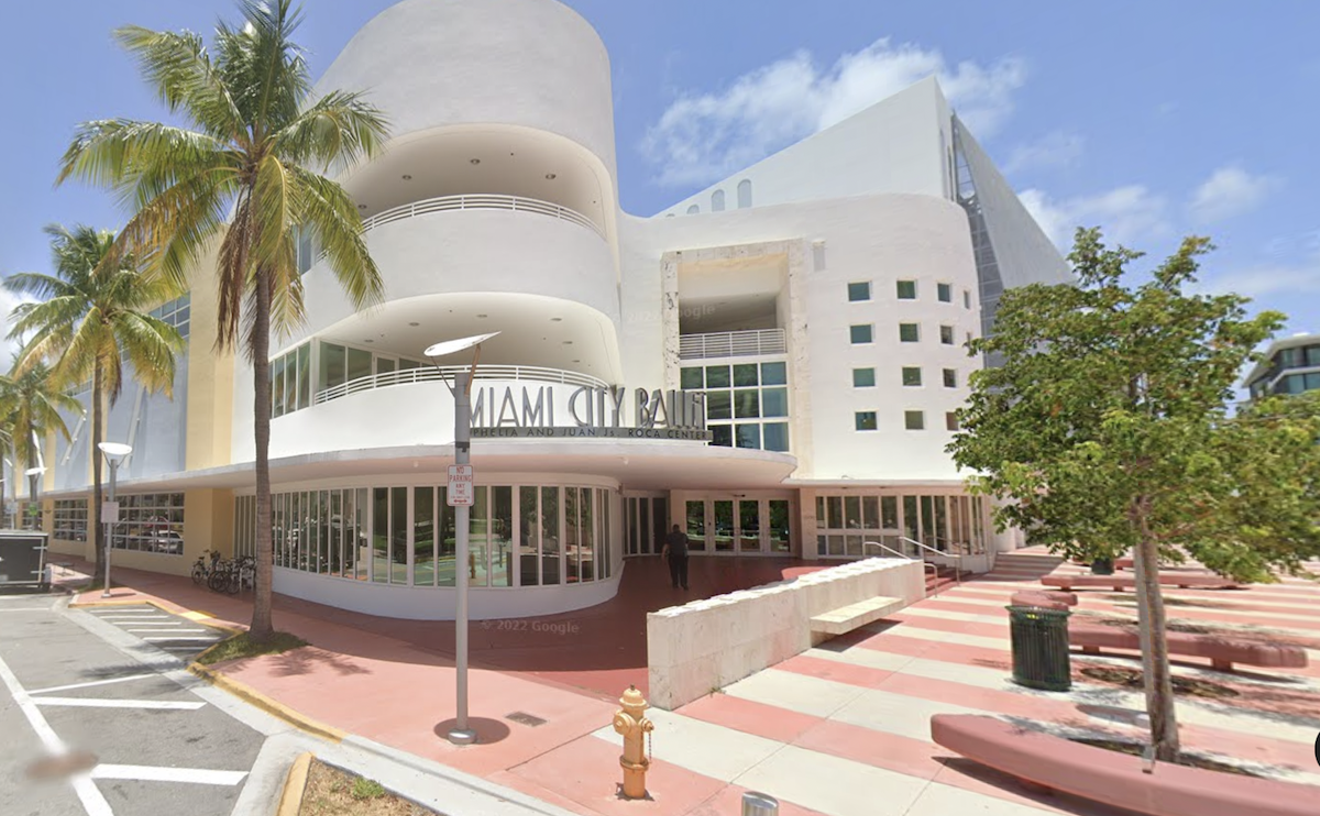"I prepared for the worst, but when the pelican came in, I was definitely not prepared for that," Russ tells New Times. "I was expecting a bad hit from a car, broken bones. I wasn't expecting cruelty. That definitely took me off-guard."
It took a few minutes for the rehab center staff to understand what they were looking at. It looked as though the bird had a plastic bag around its face. As it turned out, someone had slashed the bird's pouch, the body part that dangles below its beak, which pelicans use to collect food. Then, they'd turned the pouch inside out and wrapped it tightly over the pelican's head.
"That was shocking," Russ says.
It required some effort for Russ to peel the pouch away from the bird's head to locate its other wounds. He saw that the animal had been stabbed multiple times. Russ says the bird lost a lot of blood and there was no way he could have reattached the pelican's pouch so it could heal. He didn't think the bird would survive the night and made the decision to euthanize it.
"[The pelican] looked like he would have had a lot of pain to re-heal," Russ says. "There would have been a lot of difficulties. It would have probably been painful to breathe. In a bad way, it was an easy decision to make. Sometimes there's nothing we can do, and it absolutely sucks."
The incident last month wasn't the first time someone mutilated a pelican in the Florida Keys. In 2013, several pelicans were found with their pouches slit on Cudjoe Key and other islands in the Lower Keys. More than a dozen brown pelicans were found with their pouches slashed in late 2014 and early 2015 in Summerland and Cudjoe keys. And in January 2015, a security guard received a call about a mutilated pelican at the Venture Out Resort in Cudjoe Key.
The birds have also been found brutalized in other parts of the state. Earlier this year, a bird-rescue group treated 16 injured pelicans found on the Sunshine Skyway pier in Manatee County. And in 2015, a rescue group took in 18 pelicans that appeared to have been beaten.
Brown pelicans are protected under the Migratory Bird Treaty Act of 1918. It's against the law to injure the birds, and anyone found guilty of doing so is subject to fines and jail time.
The Florida Fish and Wildlife Conservation Commission (FWC) is investigating the recent case from Islamorada, and law-enforcement agencies in the Keys are sharing images of two men who are suspected of mutilating the animal.
An FWC spokesperson told New Times the agency could not discuss the case or provide additional information because it's under investigation, but Florida Keys Weekly reports that FWC investigators have interviewed the two suspects. No charges have been filed, and the suspects' names haven't been released.
Our law enforcement partners with the Florida Fish and Wildlife Conservation Commission are asking for the public's help...
Posted by MCSO - Florida Keys on Friday, March 19, 2021
After the bird was euthanized, the Florida Keys Wild Bird Rehabilitation Center's assistant director, Bayleigh MacHaffie, performed a necropsy — essentially an animal autopsy — and documenting the bird's injuries and appearance in detail.
"I can't confirm a timeframe, but they seemed like very recent injuries," MacHaffie tells New Times. "The blood was fresh. He had a lot of different wounds along his pouch, neck, beak, and head. Some of the wounds were more severe. A couple of slices went through his trachea, his glottis. Some puncture wounds went through the top of his skull. There was a puncture through the roof of the mouth and into the nasal cavity."
The center's executive director, Jordan Budnik, says whoever attacked the pelican must have used significant force to wrestle the skin over the bird. That kind of injury in itself can prove fatal, she says.
"A large-enough slash to a pelican pouch will result in that animal starving," Budnik says. "With tinier lacerations, it's not a problem. But extensive damage to a pouch impedes the animal from feeding itself."
In 1970, the U.S. Fish and Wildlife Service (FWS) declared the brown pelican endangered because of the threat posed by pesticide contamination. The federal government banned general use of the pesticide DDT in 1972, aiding the pelican population's recovery. By 1985, the FWS removed the brown pelican from the endangered list.
The brown pelican used to be on Florida's endangered and threatened species list because of habitat loss and injuries from fishing lines and hooks. It was removed from the endangered species list in 2017 but is now listed as an imperiled species.
It's not clear why pelicans specifically are the target of attacks. Some fishermen surmise it's because the birds can be nuisance. They sometimes snatch what fishermen catch or steal their bait. Budnik, the Florida Keys Wild Bird Rehabilitation Center director, says sometimes people hurt pelicans for a sadistic thrill.
"Maybe a year ago, a gentleman jumped on a pelican in Key West," he says. "Sometimes people just don't have empathy for these animals and do things because they don't feel they're harming them or don't care that they're harming that animal."
MacHaffie, the center's assistant director, says people sometimes hurt animals out of a sense of entitlement or because they feel the animal is an inconvenience — something she says is never justified.
"This might be our space, but it was their space first, and they're just trying to survive," she says. "Even if they attack you, they're just trying to survive. They can't communicate with us to tell us they're scared or that we're in their space. We need to respect those boundaries as humans and try to coexist with these animals."












